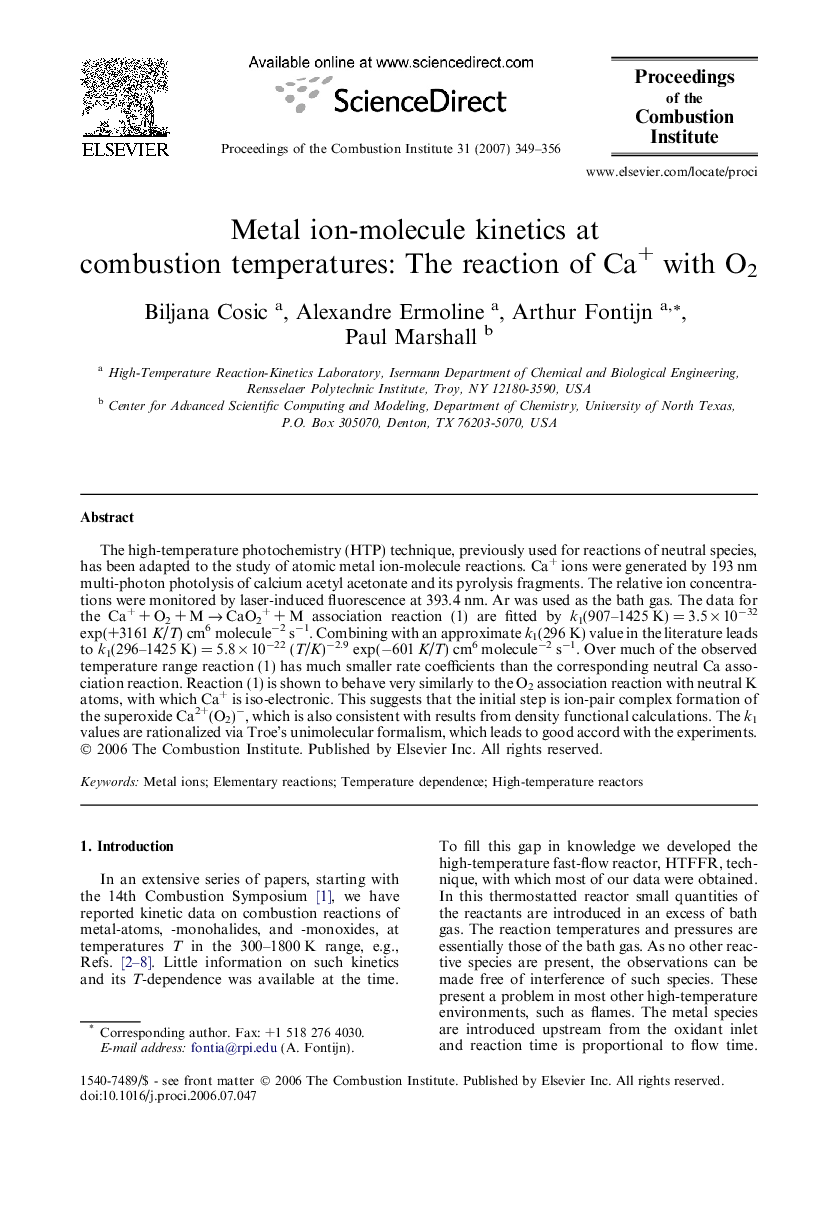| Article ID | Journal | Published Year | Pages | File Type |
|---|---|---|---|---|
| 240738 | Proceedings of the Combustion Institute | 2007 | 8 Pages |
The high-temperature photochemistry (HTP) technique, previously used for reactions of neutral species, has been adapted to the study of atomic metal ion-molecule reactions. Ca+ ions were generated by 193 nm multi-photon photolysis of calcium acetyl acetonate and its pyrolysis fragments. The relative ion concentrations were monitored by laser-induced fluorescence at 393.4 nm. Ar was used as the bath gas. The data for the Ca+ + O2 + M → CaO2+ + M association reaction (1) are fitted by k1(907–1425 K) = 3.5 × 10−32 exp(+3161 K/T) cm6 molecule−2 s−1. Combining with an approximate k1(296 K) value in the literature leads to k1(296–1425 K) = 5.8 × 10−22 (T/K)−2.9 exp(−601 K/T) cm6 molecule−2 s−1. Over much of the observed temperature range reaction (1) has much smaller rate coefficients than the corresponding neutral Ca association reaction. Reaction (1) is shown to behave very similarly to the O2 association reaction with neutral K atoms, with which Ca+ is iso-electronic. This suggests that the initial step is ion-pair complex formation of the superoxide Ca2+(O2)−, which is also consistent with results from density functional calculations. The k1 values are rationalized via Troe’s unimolecular formalism, which leads to good accord with the experiments.
